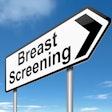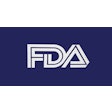A key provision in the 21st Century Cures Act has led to decreased time for patients to access imaging results, according to research published March 27 in the American Journal of Roentgenology.
Researchers led by Nelly Tan, MD, from the Mayo Clinic in Phoenix, AZ, also found that after implementing institutional policies to comply with the act’s information-blocking provisions, more patients accessed their reports before the ordering provider did. However, the researchers cautioned that this could impact communication between patients and radiologists when discussing findings.
“Radiologists should consider mechanisms to ensure timely and appropriate communication of important findings to ordering providers,” Tan and co-authors wrote.
Federal regulations have called for health systems to provide patients with immediate access to electronic health information, including imaging results, as part of the Cures Act. The "information-blocking" provisions of the act require health systems to provide patients with immediate access to their health information upon request. This means that patients can instantly access their imaging, potentially before the exam’s ordering provider can review them. The researchers highlighted that while this could impact reporting and communication practices for radiologists, such an impact hasn’t been well-studied.
Tan and colleagues compared patient access to radiology reports before and after the implementation of the information-blocking provisions of the Cures Act. They included reports for 1,188,692 imaging exams in 388,921 patients with an average age of 58.5 years. The patients underwent outpatient imaging exams in 2021 and 2022 at three Mayo Clinic campuses.
 Median time (hours) from report finalization to first patient access in portal, as well as from report finalization to ordering provider acknowledgment in the electronic medical record, stratified by month. The vertical line represents the health system’s implementation of regulations related to information-blocking provisions of Cures Act.ARRS
Median time (hours) from report finalization to first patient access in portal, as well as from report finalization to ordering provider acknowledgment in the electronic medical record, stratified by month. The vertical line represents the health system’s implementation of regulations related to information-blocking provisions of Cures Act.ARRS
The health system implemented policies to comply with Cures Act information-blocking provisions on January 1, 2022. For the study, imaging results were released in patient portals after a 36-hour embargo period before implementation, versus at once upon report finalization after implementation.
Of the total reports, 77.5% were accessed by the patient before implementation compared to 80.4% after implementation.
The team also found significant decreases in the median time from report finalization to report release, median time from report finalization to first patient access, and median time from report release to first patient access.
| Comparison of patient access to imaging results before and after implementation of information-blocking provisions of Cures Act | ||
|---|---|---|
| Measure | Before implementation | After implementation |
| Median time from report finalization to report release in patient portal | 36 hours | 0.4 hours |
| Median time from report release to first patient access | 8.7 hours | 3 hours |
| Median time from report finalization to first patient access | 45 hours | 5.5 hours |
| Reports first accessed by patient before ordering provider | 18.5% | 44% |
Finally, the researchers also reported that after implementation, the median time from report release to first patient access was 1.8 hours for patients younger than 60 versus 4.3 hours for patients ages 60 and older.
The study authors suggested that the side-by-side release of reports to patients and ordering providers could have consequences.
“For example, a patient’s lack of understanding of certain medical terms could create unnecessary worry regarding a benign finding,” they wrote. “In addition, patients and providers may prefer that a new or unexpected serious diagnosis be first communicated through direct conversation, potentially in person.”
However, the authors advised that rather than imposing a delay in access, radiologists could contact ordering providers during the time of exam interpretation. This can allow for quick notification of important imaging findings.
“In addition, radiologists may choose to tailor the language of the report, to provide greater context and explanation for certain findings in the event that the patient accesses the report before the ordering provider,” they added.
The full study can be found here.



















